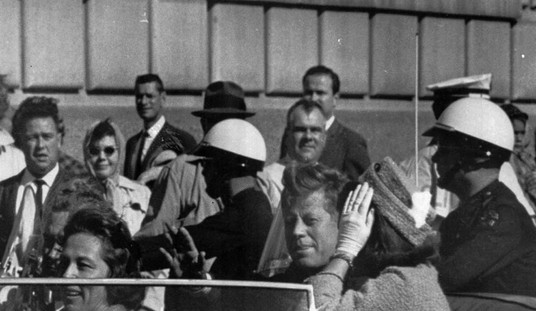This is the first of a new series here at PJ Parenting. Our writers will weigh in on parenting issues small and large and you’ll have the opportunity to share your insights in the comments section below. We’d love it if you’d join us for a cup of coffee and some great conversation!
**********
Here is the opening question from PJ Parenting contributor Bethany Mandel:
Bethany: My parents died when I was a teenager. I was extremely close to my mother, but I wasn’t too close to my father. My husband is close to his parents, and our kids love their grandparents and extended family. I’ve made a few crafts for my kids (a photo book and a magnet project seen below) so that their family, near and far, always feel close by. Here’s the pickle: Is it weird to add my parents’ images to these projects? On the one hand I don’t want them to be forgotten, but on the other, it’s kind of morbid to look at their pictures every day without understanding why they can’t/don’t see them. If I did decide to include dead people, would it be strange to just include my mother and not my father?
**********
Michael T. Hamilton: Clearly you value your heritage, and you want your kids to value theirs. Part of growing up is coming to grips with facts of life that are less than sunny, but those facts can do as much as happier notes to help our children appreciate where, and who, they came from. I can’t help but think it is a matter of time as they are working through your crafts, seeing your husband’s parents, before they wonder from which stock their mother hails. I imagine that their questions will provoke conversations substantive enough to make them wonder why your folks didn’t make the first edition. I’m sure those conversations, your descriptions of your relationships with your parents in general, and with your mother in particular, will look very different from when your husband describes his. But that contrast is one more opportunity to stretch and pour into your kids, who will learn so much about you in the process. So I say go for it. It has all the marks of redemption.
**********
Rhonda Robinson: In our home we have a wall filled with “dead people.” It holds six generations of my father’s family, including ours. On another wall hangs our wedding picture, along with three generations of newlyweds on my mother’s side. Children need a sense of belonging. We have always tried to instill in them a family identity as well as their own individuality. Pictures are oftentimes the only way to do that.
You are giving them a family identity and a sense of belonging, as well as good relationships with the extended family they do have. Why not give them the face of their grandfather? It’s much better than leaving a void you have to explain. You’re right, they should not be forgotten, and the very best of their memories should be passed down to their grandchildren. That’s a gift only you can give them.
Leslie Loftis: Short answer: include both pictures. You designed the crafts so that the children can feel a bond with their family, regardless of distance or time. Death shouldn’t affect that.
Explanation: This is one of those occasions when it is easy to overthink parenting. Often we assume young children have adult levels of understanding and, therefore, we think that they require full answers when a question first comes up. They don’t.
You don’t have to explain to young children why you included those pictures beyond telling them these are your parents, just like you don’t have to explain all the facts about sex the first time a child asks where babies come from. Give age- and child-appropriate answers. The explanations about death and strained family relationships can come later, when they are ready.
And “later” is really the clincher for me. It might seem temporarily odd to have your parents in the craft now, but it would seem much odder later on when your children do understand why you made the projects. Then they will wonder why one set of grandparents were excluded. That wonder will draw much more awkward questions and answers than a simple explanation that your parents have passed.
**********
Paula Bolyard: There are some missing pictures and stories in my family — things that my parents, for whatever reason, never felt comfortable discussing. I grew up feeling like there was some terrible secret we weren’t allowed to talk about. For all I know, it wasn’t even a big deal, but it had the aura of a Big Secret and that’s something you always carry with you. Keep in mind that kids can misunderstand what we are saying with our silence and if you don’t fill in the blanks for them, they will sometimes do it with stories of their own creation.
On a practical level, I think you could include your parents in some of the pictures. They don’t have to be the centerpiece of every picture, but don’t leave them out completely. Matter-of-factly tell your kids who they are and what role they played in your life. When they’re young, it’s enough to say, “Mommy didn’t know her daddy very well, honey, but you have a wonderful daddy who loves you and is here for you every day!” Leave it at that until they begin to ask for more details. You can add more information as your kids mature and begin to understand more about life and death and the complexities of relationships.
**********










Join the conversation as a VIP Member